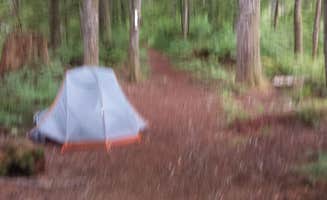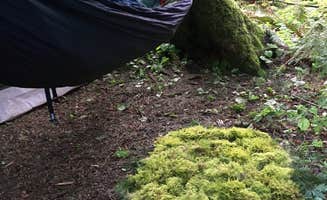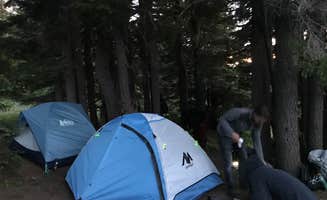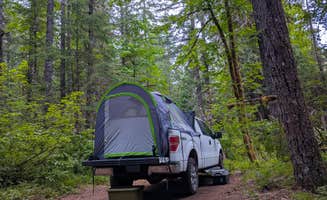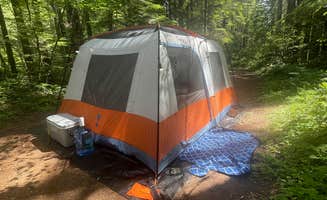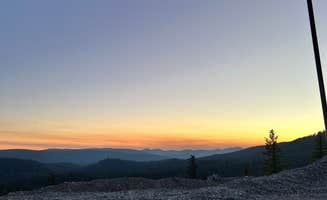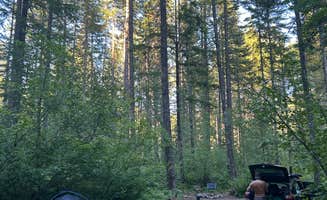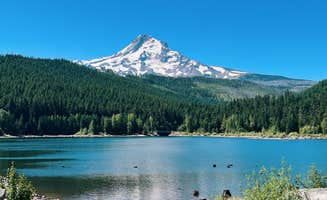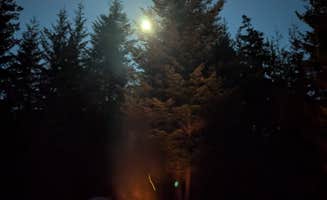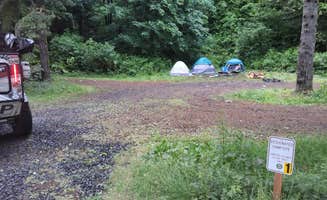Dispersed camping near Milwaukie, Oregon requires careful planning during fire season, typically July through September, when restrictions often limit campfire use and access to certain forest roads. Most free camping sites sit between 1,500-4,000 feet elevation, creating significant temperature variations between day and night even during summer months. Cell service becomes increasingly patchy beyond a 45-minute drive from town, with many camping areas experiencing complete dead zones.
What to do
Creek exploration: Walk-in sites at Little Soda Springs Rd Dispersed offer stream access within short hiking distance. "It's a short hike down to the creek. It looks like there might be two walk-in campsites as well and I believe there might be one if you walk across the Creek," notes Vanessa T. The area connects to nearby trailheads for extended hiking options.
Stargazing: NF 2656 roads provide excellent night sky viewing areas with minimal light pollution. "The night sky was insane here," reports Julie H. about her experience at Mount Hood National Forest - NF 2656 -Dispersed Camping. Several camping areas feature established clearings that offer unobstructed celestial views.
Wildlife watching: Early mornings at forest edges often reveal deer, rabbits, and numerous bird species. "I love how Vanessa mentioned the creek access from that first campsite! As someone who's been searching for dispersed camping spots with water features, this feels like such a gem," writes Haroon A. about Little Soda Springs Rd. Quieter weekday visits significantly increase wildlife spotting opportunities.
What campers like
Proximity to Portland: Many sites provide quick getaway options under 90 minutes from the city. "For being about an hour outside of Portland, this place is magical. If you're into disbursed camping, you have to give this place a visit," writes Casey B. about Tillamook State Forest Dispersed Camping, highlighting its accessibility for weekend trips.
Private water access: Several camping areas feature personal stream or creek access. "I stayed at the first site when you first get there back there on the right hand side. It's a short hike down to the creek," explains Vanessa T. Many sites offer water features for cooling off during hot summer days.
Winter camping options: Snow parks convert to free camping areas in summer. "Huge parking lot w/ two bathrooms. Less than 10 vans when I showed up on a Friday night. Stream nearby but very muddy," reports Callie C. about White River West Sno-Park. These areas typically offer more level parking than forest road sites.
What you should know
Fire restrictions: Regulations change rapidly during summer months. "We had a great shady spot not far from a small creek, and it was perfect for relaxing," notes Johny B. about Little Soda Springs, but campers should check current fire danger levels before planning campfires.
Road conditions: Many access roads deteriorate significantly after rainfall. "Like others said road getting in sucks. Site I picked had a trail down to the creek that was nice," reports Chris J. about Gifford Pinchot National Forest-Canyon Creek Dispersed Camping. Low-clearance vehicles often struggle on unmaintained forest roads.
Permits required: Different forests have varying permit requirements. "These sites require a US National Forrest camping pass," advises Lindsey N. Passes cost $5-10 daily or $30-35 annually, available at ranger stations and some outdoor retailers.
Campsite availability: Popular areas fill quickly on weekends. "For a free place to stay it sure beats a parking lot. Lots of trees, large spaces but lots of rain in May," notes Lynne R. about Trillium Lake Airstrip. Arriving mid-week significantly improves chances of finding preferred spots.
Tips for camping with families
Toilet accessibility: Choose sites with vault toilets for easier family camping. "The area's a great mix of forests and open views, and you're close to some amazing trails near Mount St. Helens and the Columbia River Gorge," mentions Contact.Tayyab.786, with Little Soda Springs offering nearby vault toilet facilities at trailheads.
Safety buffers: Select sites away from cliff edges and water hazards. "There are tons of spots here. Some are tucked back in the trees and are more 'prime' spots, otherwise there's a huge middle area that tons of cars can squeeze into," explains Stacy J. about Trillium Lake Airstrip Dispersed.
Weather preparation: Pack for significant temperature changes. "We camped off FS 2656 just south of Trillium Lake in August 2020. There are many other locations," shares Ariel & John W., with temperature swings of 30-40°F common between day and night even in summer months.
Tips from RVers
Level parking challenges: Bring extra leveling blocks for uneven surfaces. "This is a large, paved parking lot with a stream nearby. Has a good view of Mt. Hood and vault toilets, so that's a positive. The downside is that it's not level," warns Garrett B. about White River West Sno-Park. Most dispersed sites lack graded parking areas.
Site selection priority: Arrive early to secure spots with adequate turning radius. "We were able to get a spot arriving around 9pm. There were lots of spots, but this is a very exposed campground," notes G W. about Trillium Lake Airstrip. Many forest roads lack turnaround space for larger vehicles.
Highway proximity: Balance accessibility with noise considerations. "Super easy and convenient spot to Camp. We visited in early May, and there were several places to park and camp in the large, open parking lot," explains Brendan R. Sites closer to highways provide easier access but more traffic noise.


